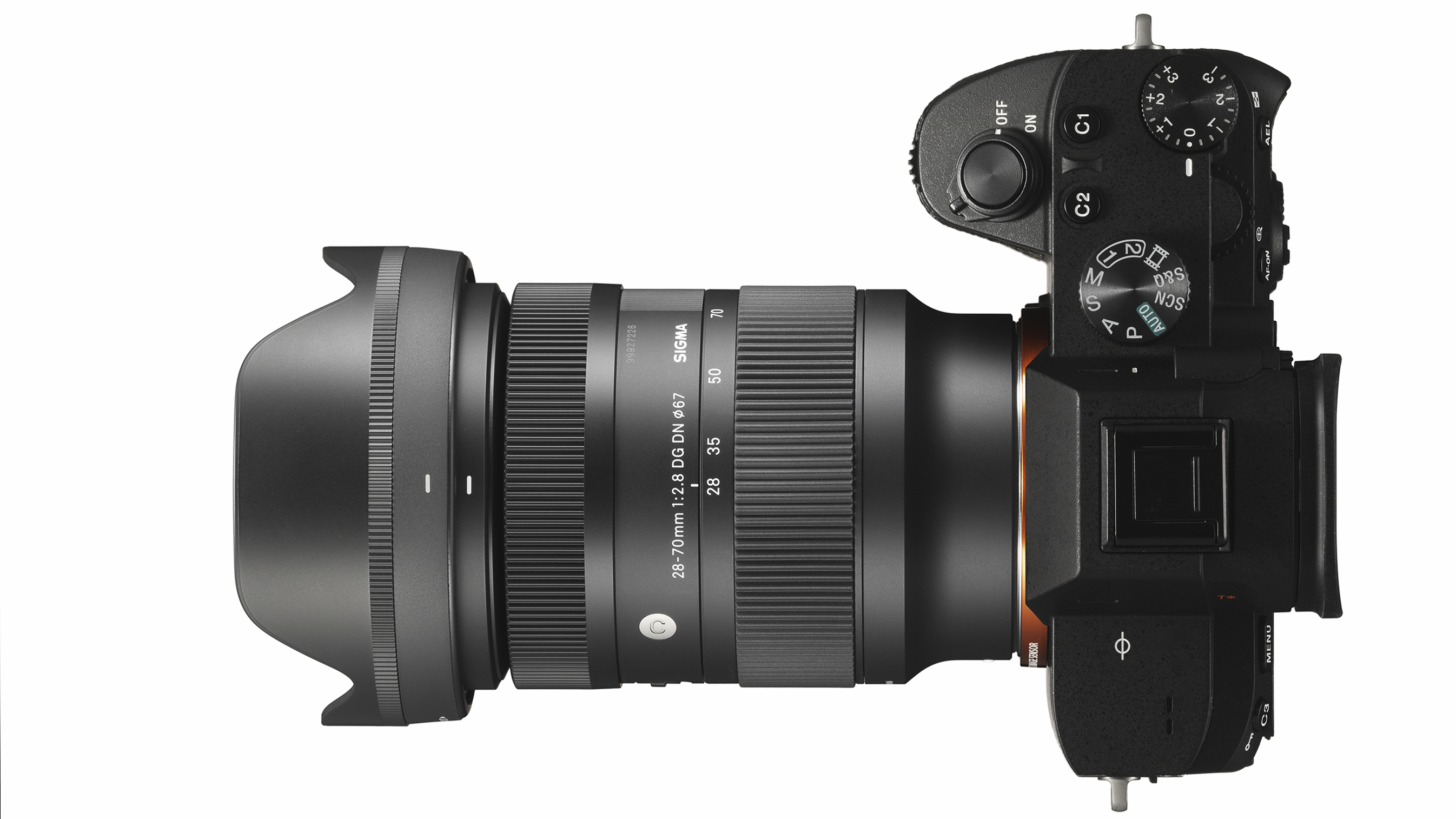Sigma launches a new compact 28-70mm f/2.8 DG DN contemporary
Sigma's live YouTube presentation reveals a pint-size standard zoom for Sony FE and L-mount cameras

Sigma has announced a new, compact Sigma 28-70mm f/2.8 DG DN Contemporary lens for Sony FE and L-mount cameras. The company already makes a Sigma 24-70mm F2.8 DG DN | Art lens, but this is a larger, heavier model. The new lens is 40% lighter without compromising on build quality or performance, and should be an especially good match for smaller cameras, including the Sigma fp.
Sigma's three objectives were:
1. More compact size
2. Same optical quality as existing 24-70mm lens
3. Outstanding build quality
Unlike the current generation of full frame 24-70mm f/2.8 standard zooms, which are pretty big, the Sigma 28-70mm f/2.8 DG DN Contemporary strikes a balance between performance and portability, with an optical design based on the Sigma 24-70mm F2.8 DG DN | Art lens, but with a significantly smaller body – achieved with a slight reduction in zoom range at the ‘wide’ end, from 24mm to 28mm.
The new lens weights 470g, which is 40% lighter than the Sigma 24-70mm, and it's also 20% shorter and slimmer.

Sigma points out that fitted to a Sigma fp the combined weight just 892g, which is less than the Sony 24-70mm G Master lens on its own.
This is achieved with a compromise in the minimum focal length, which is 28mm rather than 24mm. You're trading angle of view for a much more compact lens.
The best camera deals, reviews, product advice, and unmissable photography news, direct to your inbox!
The image above shows a comparison between the optical designs of the new 28-70mm lens (top) and the existing 24-70mm lens (below). Sigma believes it has achieved the same level of optical quality, and quotes glowing reviews for the existing 24-70mm lens.
Sigma has also paid special attention to ghosting – amusingly, it calls its lens designers 'ghostbusters. We understand the new lens also has Super Multi-Layer Coating and Nano Porous Coating, with a water and oil repellant coating on the front element.
This lens is made of may plastic parts to make it lighter, without affecting its build quality, which Sigma takes very seriously. It uses TSC (thermally stable composite) material to give a very solid feel, and the engineers prioritised build quality over size and weight – apparently this lens could have been smaller and lighter still, but the engineers felt the compromises would be unacceptable.
Sigma wants users to feel this lens has a premium feel, not a cheap feel!
Specifications
Construction: 12 groups, 16 elements (2 FLD, 2 SLD and 3 aspherical elements)
Angle of view: 75.4° – 34.3°
Number of diaphragm blades: 9 (rounded diaphragm)
Minimum aperture: F22
Minimum focusing distance: 19 (W) - 38 (T)cm
Maximum magnification ratio: 1:3.3 (W) - 1:4.6 (T)
Filter size: 67mm
Maximum dimension x length: 72.2mm×101.5mm
Weight: 470g
Sigma 28-70mm f/2.8 DG DN Contemporary price and availability
Sigma's new 28-70mm zoom will be available from 12 March and will cost $899/$759, which is a pretty modest price point for a premium full frame constant aperture zoom. Well done Sigma!
Read more:
• Best standard zoom lenses
• Best Sony lenses
• Best L-mount lenses
• Sigma fp review

Rod is an independent photography journalist and editor, and a long-standing Digital Camera World contributor, having previously worked as DCW's Group Reviews editor. Before that he has been technique editor on N-Photo, Head of Testing for the photography division and Camera Channel editor on TechRadar, as well as contributing to many other publications. He has been writing about photography technique, photo editing and digital cameras since they first appeared, and before that began his career writing about film photography. He has used and reviewed practically every interchangeable lens camera launched in the past 20 years, from entry-level DSLRs to medium format cameras, together with lenses, tripods, gimbals, light meters, camera bags and more. Rod has his own camera gear blog at fotovolo.com but also writes about photo-editing applications and techniques at lifeafterphotoshop.com



